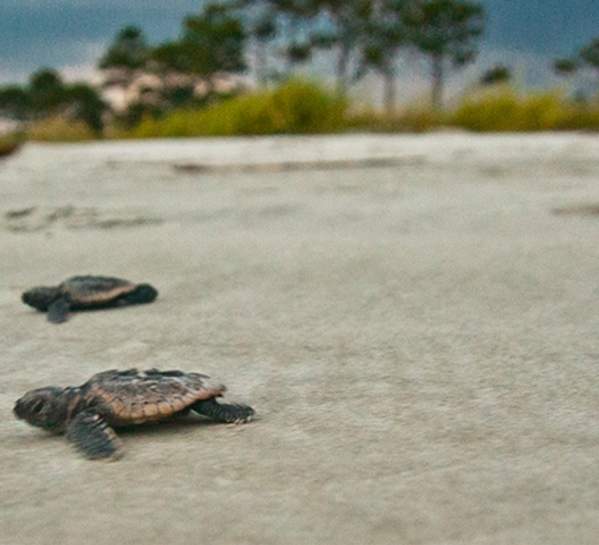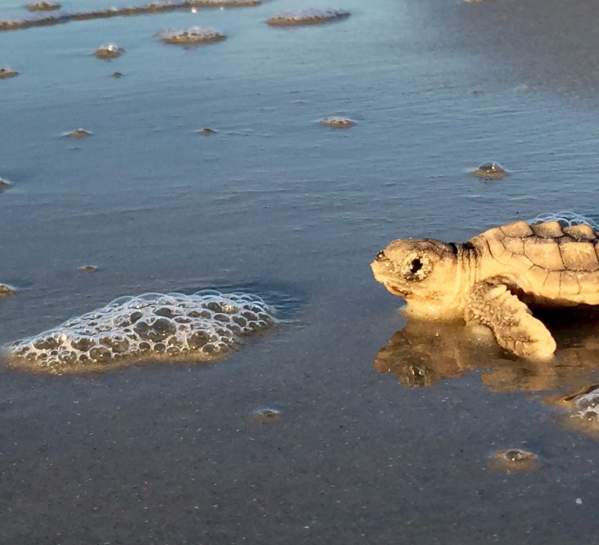From the Mediterranean Sea to the Atlantic, Pacific and Indian Oceans, there is no other sea turtle more widely distributed than the loggerhead sea turtle. But don’t let this fact fool you into thinking they are a common sight. Like many sea turtles, loggerheads are increasingly rare and considered endangered. Seeing one in its natural habitat is often a once-in-a-lifetime highlight for nature lovers, and there is no better place on the Eastern Seaboard to encounter them than the Golden Isles.
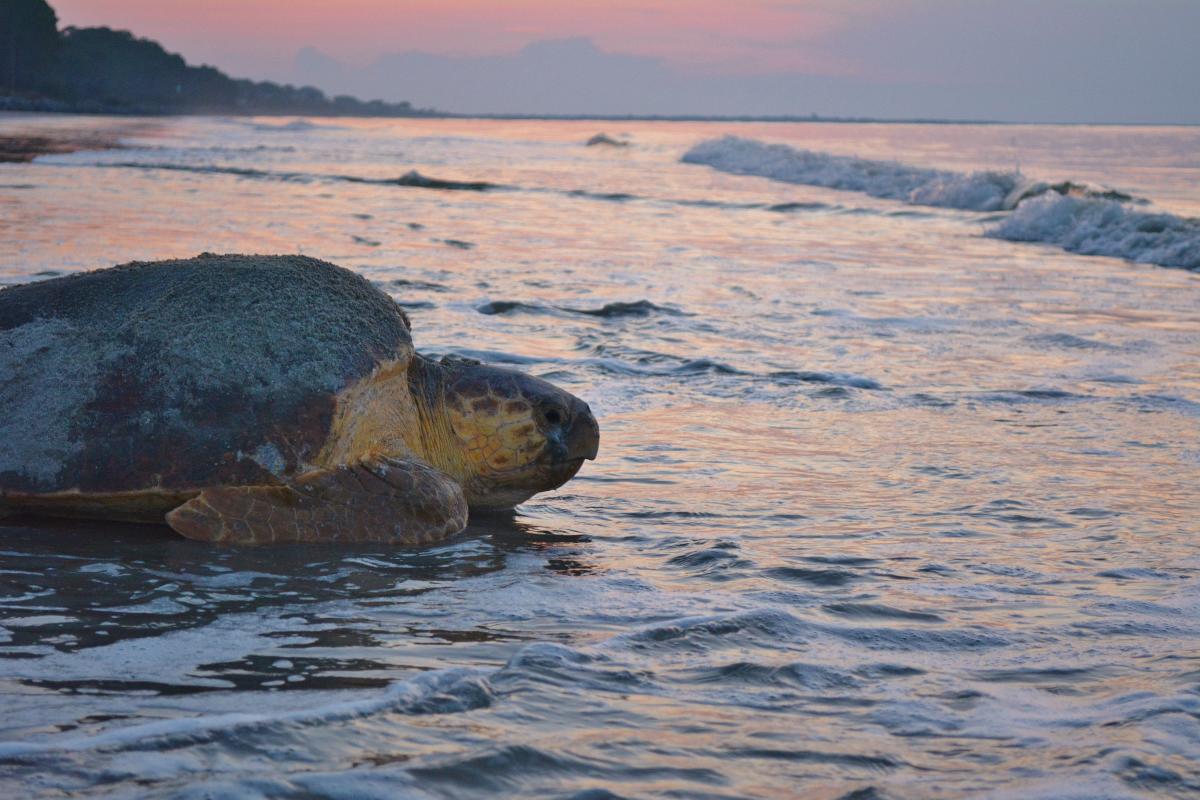
Their Journey: From Sea to Sand and Back
Like all sea turtles, loggerheads come ashore to lay their eggs. In the case of the loggerhead sea turtles that visit the Golden Isles, this occurs every year in June and July, with the baby turtles hatching in August. The journey is fraught with dangers. In the nest, eggs are vulnerable to predators (especially raccoons and foxes), and when they hatch, crabs, seagulls, lizards, and numerous land mammals can easily prey upon them as they cross the sand to reach the sea. And this is only the beginning, as several aquatic predators pose a whole new set of dangers once they reach the surf. It is because of this gauntlet of hazards that loggerhead sea turtles lay on average 112 eggs per clutch, with females often laying 3 to 4 clutches of eggs in a season. Their survival is a game of odds.
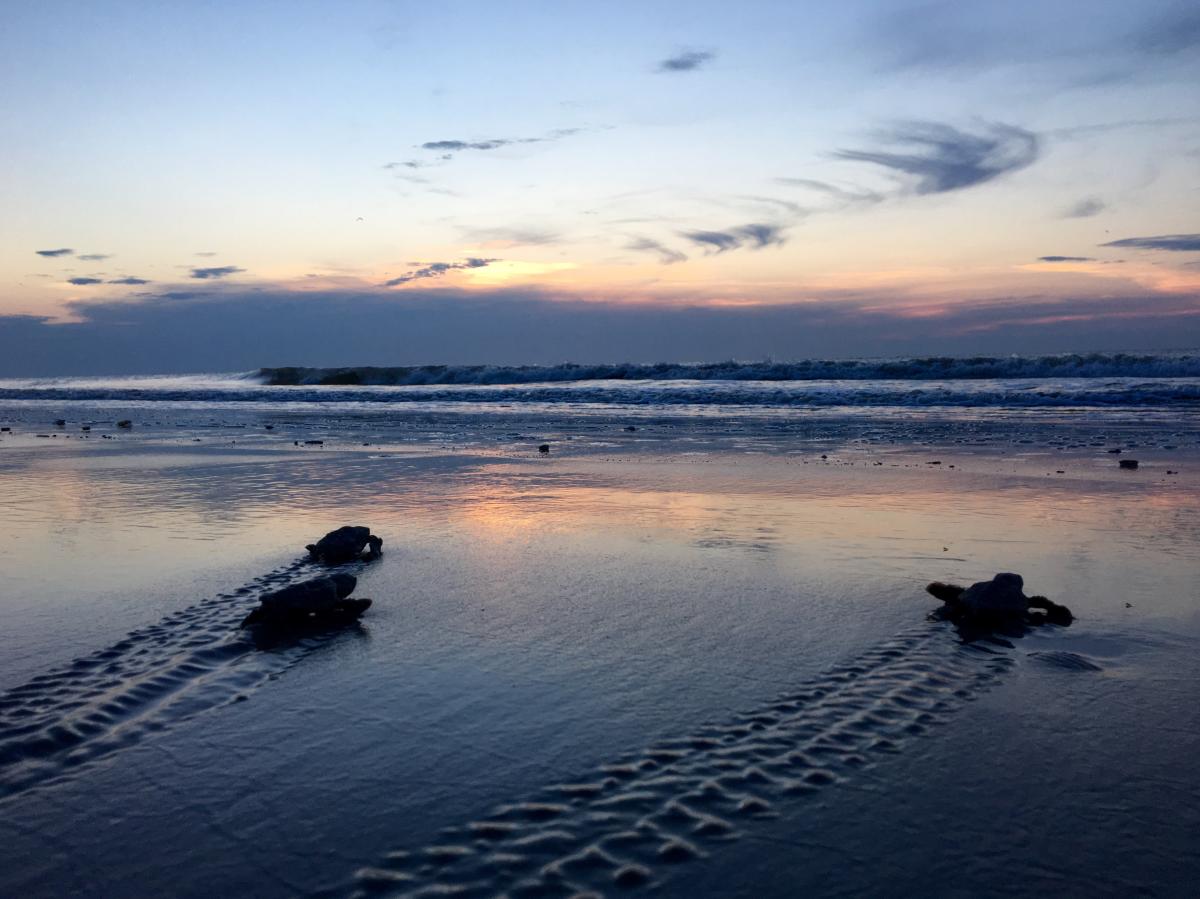
Seeing Them: When, Where and How
Loggerhead sea turtles are most visible during the nesting season, which begins in early June and lasts through the end of July. The hatch often occurs in August. The Georgia Sea Turtle Center offers two different field trips that create your best chance for witnessing these turtles.
Turtle Walks
Stroll the beach at night with a naturalist and other turtle lovers. Tours are offered at 8:30pm and 9:30pm, and whale sightings are not guaranteed, the naturalist’s knowledge of the beach and real-time connection to other turtle watchers increase your odds. Turtle Walks proceed at a slow pace to keep from startling a nesting mother. However, due to the terrain that is covered, it is not recommended for the disabled, elderly or children 4 and under.
Nest Walks
Join a Georgia Sea Turtle Center naturalist for a close inspection of a sea turtle nest after the turtles have hatched. You will help them inspect the nest to see how successful the hatch was, and you may even get the chance to see a live baby turtle making a dash for the waves.
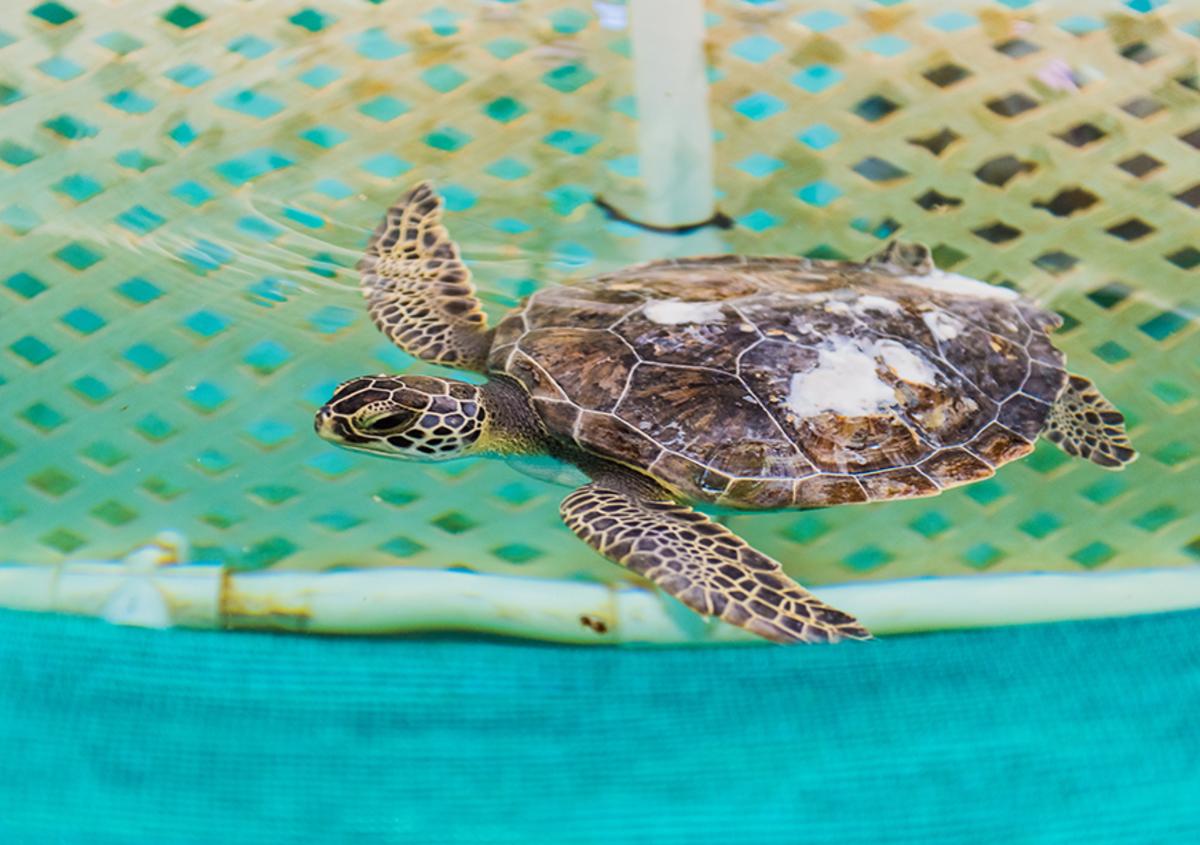
Visit the Georgia Sea Turtle Center
Situated on Jekyll Island, the Georgia Sea Turtle Center helps the loggerhead sea turtle in two ways: by providing care and rehabilitation for sick and wounded turtles, and by educating the general public through interactive exhibits and special programs. Learn more about visiting the center.
Fun Facts About Loggerhead Sea Turtles
• Loggerhead sea turtles live in both saltwater and estuarine habitats.
• With adult males weighing nearly 300 pounds, the loggerhead sea turtle is the second largest hard-shell turtle on earth.
• After laying their egg clutches, females become quiescent, meaning they will not reproduce for two to three years.
• It is believed that the sex of a loggerhead sea turtle is determined by the underground temperature of the nest from which they hatched.
Sea Turtles FAQ
When do loggerhead turtles hatch?
Sea turtle nesting season in the Golden Isles begins in May and can last through August. If you’re visiting the Golden Isles during that time, it’s important to be conscious of your surroundings and any clues that sea turtles may be in your vicinity.
Where do loggerhead sea turtles lay their eggs?
During nesting season, female sea turtles come ashore to lay their eggs in a nest called a “body pit.” It’s common to see sea turtle tracks leading from the ocean to the dry patch of sand where the body pit was constructed—an easy way to determine where sea turtle nests are located. You can also view a variety of nest monitoring resources to find out where sea turtle nests in the area are located.
Where do loggerhead turtles live?
Loggerhead turtles live in oceans around the world, and they are the most common sea turtles to nest in the Golden Isles. In fact, 95% of nests here are Loggerhead nests.
What time of year do sea turtles hatch?
Sea turtles often hatch mid June through August. Once hatched, baby sea turtles journey from the shore to the ocean.
What time of night do sea turtles lay eggs?
The majority of sea turtles lay eggs in the evening, that way they have enough light to navigate to the beach and tides are appropriate.
What time of day do sea turtles hatch?
Sea turtles often hatch at night. Once hatched, baby sea turtles journey from the shore to the ocean. Hatchlings rely on moonlight to find their way from the nest back to the ocean.
